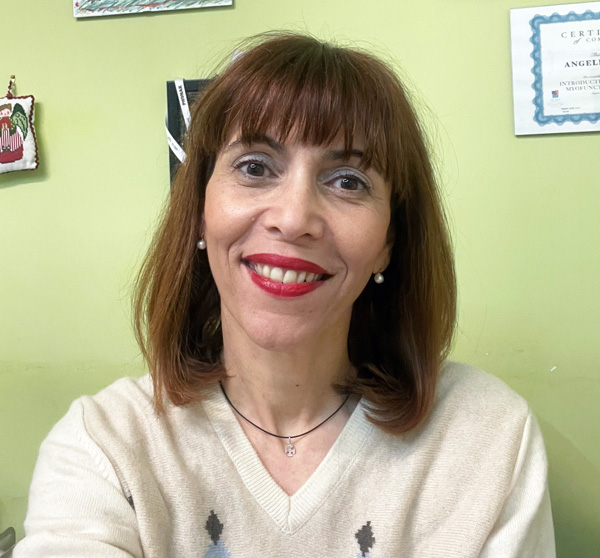Webinar: Learn about Speech Therapy & Articulation with SLP Angeliki Xygka
16th May 2022
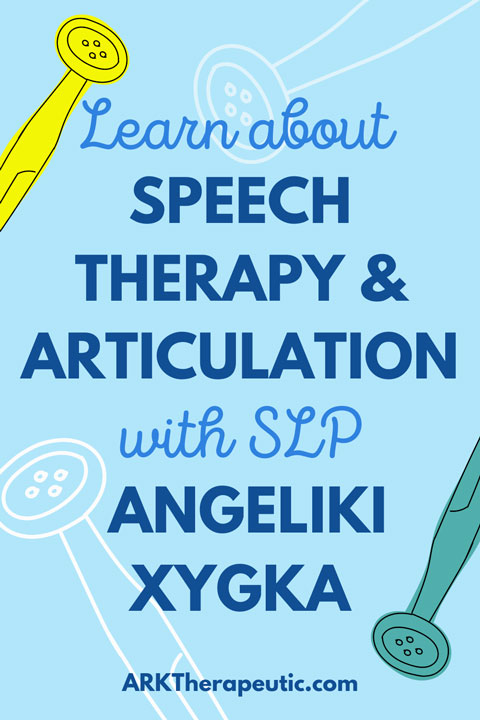
Below is the video and transcript from a live webinar we hosted featuring Speech Language Pathologist (SLP) Angeliki Xygka.
In this webinar, Angeliki will be presenting specific exercises on how to use ARK tools to facilitate the production and articulation of certain phonemes, including bilabial (p, b), dental (f, v, θ, δ), alveolar (t, d, s, l, n), palatal (r), and velar (k, g) sounds.
We hope you find it helpful! If you have any questions at all, please let us know. And feel free to sign up for our newsletter to know about future webinars.
.
.
Hannah: My name is Hannah at ARK and today we’re going to be learning tips and exercises for speech therapy from Angeliki. If you missed out on Angeliki’s feeding therapy webinar that we hosted back in April, I’ll just do another quick introduction about her. She’s from Athens, Greece and a speech therapist, myofunctional therapist, and SI therapist. She graduated from City university London in 1996 and also trained by the academy of orofacial myofunctional therapy. We’re also developing some really new exciting products together so stay tuned for those. We’ll have more information about that later but yeah, I’ll just send it off to Angeliki to start off her presentation!
Angeliki: Hello Hannah, hello everyone! For those that haven’t met me in the previous webinar, I am Angeliki. I’m a speech language pathologist working here in my clinic in Athens, Greece. I specialize in Apraxia, speech and language delay, and feeding therapy. I am also a Myofunctional Therapist and have developed my own method for tongue thrust. So today in this webinar we’re going to talk about speech production and articulation and how we can facilitate this by using some of my favorite tools including the Z-Vibe.
My personal therapeutic approach when I work on articulation is a combination of oral placement and myofunctional work. I believe that when we are targeting a phoneme, working only on oral placement is not enough. If we want better and quicker results, we have to also work on muscular strength and stimulation and work with all the muscles that are involved in the production of this phoneme.
Today we’re going to split the exercises according to the placement of phonemes and oral placement. I’m going to use different Z-Vibe tips for each speech therapy exercise.
We’re going to start with bilabial (p, b) phonemes, go to dental (f, v, θ, δ), alveolar (t, d, s, l, n), palatal (r) and velar (k, g).
.
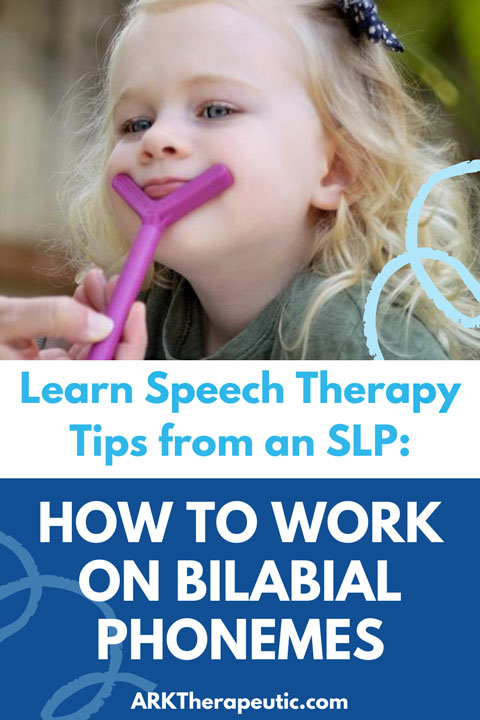
.
BILABIAL (p, b) PHONEMES [2:23]:
Alright so at the beginning of our speech therapy plan - let’s say we have a 3 year old child coming to your clinic with speech and language delay. We usually start working with bilabial phonemes (p, b, m). These sounds come first in the developmental chart, but it’s not only that - for bilabial phonemes we need good lip closure.
Good lip closure is not only important for speech, but also for breathing. If we have a mouth breather then we have loose lips and we have to establish good lip closure. It’s important for feeding - loose lips can’t hold food inside the mouth or we have drooling and can’t control the amount of food. And in general for the facial appearance of the person. So we need to establish good lip closure first.
In order to facilitate this, I’m going to start with my favorite Y-Tips:
- I’m going to first use the thicker one (teal Y Tip) - I’m going to put the Y Tip, of course with vibration, on the lower lip and just hold the lips together for up to 10 [seconds] - because I want to give the child a sense of how the lips touch each other. I don’t emphasize so much on the upper lip. I usually work with the lower lip because we usually have this [demonstrates open mouth posture with tongue resting forward on the lower lip ] appearance - so lower lip close to the upper lip.
- Then I’m going to repeat the same exercise with the middle one (magenta Y Tip). Again hold up to 10 [seconds and repeat the exercise] three times.
- And finally I’m going to add the flat (thinner/orange) one and I leave it at the end. I have to tell you that these exercises, of course I’m going to use the word “child” - but you can use them the same way with adults. So I’m going to take the thinner one (orange) first [using the Y Tip to push the lower lip up] pushing the lips together.
- Then I’m going to ask the child to bite [on the orange Y Tip inside the mouth] and hold up to 10 [seconds] and you can do that for three times. And then I’m going to gently try to pull it out [while the child bites down on the Y Tip]. You see there’s a nice resistance and the vibration gives very nice stimulation on the lips.
- Since I’m holding the Y Tip I’m also going to use it - if let’s say for example, we are working on vowels like "ee" and "eh" and we want the lips to spread [upwards] just like that. Usually in Greek, I don’t know about other languages, but in Greek we have some children who mix up "ah" as in "eh" or "eh" as in "ah". So if we want to produce the phoneme "eh" - I’m going to [place the Y Tip in between teeth and prompt] and "eh, eh, eh". It’s nice because with the Y Tip you can spread the lips apart. And you can also use it a bit more - take it off from the Z-Vibe and ask the child to hold it like this [having child hold the Y Tip with lips].
After the Y Tips, I’m going to use my favorite Button Tips. I use the Button Tips a lot - you know that already from the previous webinar on feeding therapy, it’s my favorite tip!
- I will start with the bigger one - because it’s easier for lip rounding. So I ask the child to close the teeth and then [wrap their lips around the Button Tip] and hold up to 10 [seconds] and I’m going to pull it gently out from the lips. How many times you’re going to do it depends on the tolerance of the child - the more the merrier, but you can see how much the child is working with you.
- Don’t forget the sides of the lips [holding the Button Tip on one side of the mouth and pulling it out, repeating on the other side].
- And we can also work it all the way around from one side to the other [of the mouth, while lips are wrapped around the Button Tip].
- And I also do some very nice "pop, pop" [of the lips when pulling out the Button Tip] - kids like that one, especially if the [pop sound] is loud.
- Then I’m going to use the next smaller one - unfortunately I can’t find that one from my set. I think I threw it away by mistake, I’m so sorry! But if you have it you’re going to go to the next teal one (#3 size teal Button Tip). For me I’m going to go straight to the next smaller tip [#2 yellow Button Tip] - this is from the set with the two smaller Button Tips. They come in two sets - two big [teal] ones, and two smaller [yellow] ones. So with the #2 Button Tip again the same pull [having the child hold the button in their lips, and pulling it out] and hold [for 3 seconds] - always at the sides too.
- Lastly the smallest [yellow] one. When you try [the #1 yellow Button Tip] you see that this is much more difficult with the smallest one because we need to bring the lips together more in order to hold it. Instead with the bigger one [larger teal Button Tip] which is much easier - you see, you just have to close a little bit of the lips. So start with the bigger one, and gradually go to the smaller one.
- What I like to do in this exercise and I find it very funny for the kids - I’m going to use two sets of the smaller ones [yellow Button Tips]. I’m going to add one at this side [having the child hold Button Tips at each side of the mouth, and poking out]. This is very funny and very good for the sides of the lips. And I tell the child, “Oh it’s wonderful, you look like an elephant!”
- You can also try to pull it out [having child hold the Button Tips on each side of the mouth, and gently pulling it out]. And then see if the child can hold three Button Tips [gently pulling each button one at a time]. It’s very funny, but don’t try it with the big ones - it’s more difficult. Perhaps with another you can do it, but it’s nice to do it with at least three. I haven’t tried four - I think three is enough all together in the mouth.
We’re still on the bilabial phonemes - now I’m going to use this Flat Textured Spoon. It’s from the list of feeding tools but I use it in speech therapy as a spatula (tongue depressor).
- So what I want the child to do is close the teeth and then hold it with the lips [holding the Flat Textured Spoon with their lips].
- You can play beats [tapping on ends of the flat spoon] and say, “Oh I’m going to make it a little more difficult, be careful!” - or you add some Cheerios on top [one on each end] for some extra weight [holding the Flat Textured Spoon with the lips]. It’s not heavy, we just say that to the child to be more creative.
Alright, so those are the products for working on the bilabial phonemes in speech therapy: the Y Tips, Button Tips, and the Textured Flat Soon. I like the texture (of the Textured Flat Spoon) because it gives extra stimulation on the lips.
.
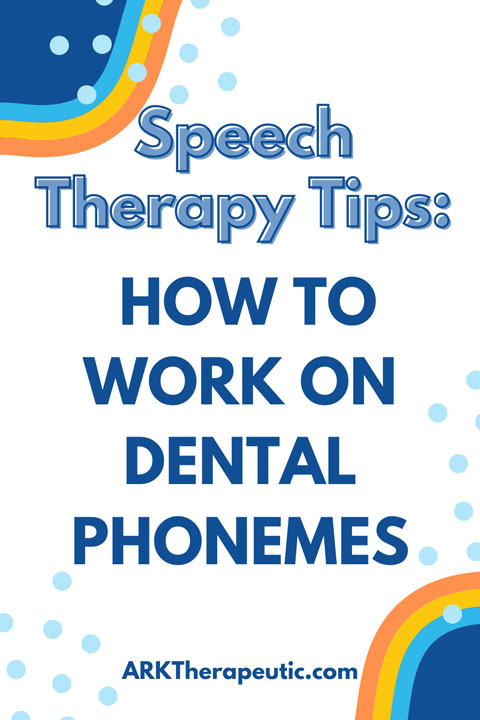
.
DENTAL (f, v, θ, δ) PHONEMES [12:20]:
Let’s go now to dental phonemes like f and v.
- The only exercise that I can use here that’s an ARK Therapeutic tool is by biting [using the front teeth] the spatula [the Flat Textured Spoon] and this is to add some extra strength on the biting [making the f/v sound] and stimulation where we should bite.
- For the "th" phoneme (voiced and unvoiced) very common in Greek languages and I think also in other languages - we want good coordination of the tongue - in and out of the mouth. So I’m going to take again the spatula [the Flat Textured Spoon] and ask the child to get the tongue in and out [holding the Flat Textured Spoon to the corners of the mouth horizontally, and moving the tongue in and out]. This is a very good exercise for Apraxia also, because coordination is very important.
- Just to make my exercise more difficult and fun, I'm going to add [placing a Cheerio on tip of the tongue, repeating exercise pushing the tongue in and out] and then the child can eat the Cheerio. I like fruit loops too, mostly because they come in many different colors and you can do the same exercise but with every color so we have many, many repetitions.
.
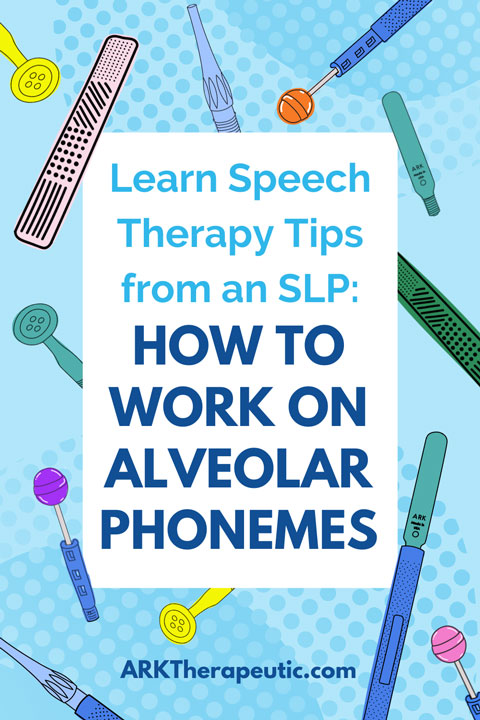
.
ALVEOLAR (t, d, s, l, n) PHONEMES [14:00]:
Let’s go now to some alveolar ( t, d, s, l, n) phonemes - very important to do in speech therapy and articulation. We have many times in the clinic with children gliding "ya" sound instead of "la" and of course "s". We have many cases of the lateral "s" and this is also difficult to work with.
For a good alveolar phoneme we need of course tongue elevation. For tongue elevation, I’m going to first use the smooth Z-Vibe spatula (the Tongue Depressor Tip).
- I’m going to add my vibration and gently pull the tongue upwards [using the Tongue Depressor Tip], three times / four times and then hold. So it’s always pull and hold. Because don't forget that a very weak tongue, it’s going to stay down on the base of the mouth so you have to elevate it [lifting the tongue upwards, and then hold it] with your Z-Vibe. The vibration gives a good stimulation.
- I can also use one of my Button Tips for tongue elevation. Look at how nicely it goes under the tongue and elevates [pushing the tongue upwards].
- And after I have worked a little bit with elevation with the help of the Z-Vibe spatula tip [Tongue Depressor Tip], I’m going to start working now on the correct spot. Because when we want to produce a phoneme like L and N, we need the tongue to touch the palette alveoli, those bumps behind the teeth.
In order to give this knowledge to the child, I'm going to use my favorite Fine Tip. This is a must-have tip working with the "L" sound and spot placement.
- I’m going to add again a Cheerio [on the Fine Tip] and with vibration, put the Fine Tip on the correct spot on the alveolar. And ask the child to lick the Cheerio. I stay there for up to 10 [seconds].
- If the tongue still can’t elevate, go a step backwards and work again with helping the tongue with the spatula [Tongue Depressor Tip].
- When we’re alright with this step - when the child can lick and reaches with the tongue for the Cheerio, then I’m going to gently take off the Z-Vibe but ask the child to stay there and hold the Cheerio [with the tip of their tongue and hold it there for about 5 seconds]. Then they can have the Cheerio! So first to the correct spot (alveolar ridge), then tongue elevation [holding the Cheerio with tongue on palate alveolar], and then take it out. This is an exercise I always give at home to carry over. If the child cannot elevate [the tongue] on their own, I ask the parent or child (if older enough) to put the Cheerio on the correct spot and then elevate the tongue and stay there. Otherwise the child can put the Cheerio on the tip of the tongue [holding the Cheerio on palate alveolar] and stay there up to ten (seconds) with many repetitions. This is a very important exercise also when you treat tongue thrust - the correct spot on the palate.
Another idea if you work with the "L" phoneme is to use a lollipop. Always choose a small lollipop, and put it on the Popette Tip. The vibration [of the Z-Vibe] also gives a very nice stimulation where the tongue should go [placing the lollipop on alveolar ridge, and trying to lick the lollipop].
Since I’m holding the Popette Tip, I will show you another exercise that you can use for lip rounding - especially if you work for phonemes like "sh". Close the teeth and [wrap the lips around the lollipop] not bite it, just hold it with the lips. It’s very nice to work on [the Popette Tip] for lip rounding.
Last in our speech therapy exercises that I’m using for alveolar phonemes - I’m going to take my spatula (Flat Textured Spoon) again. You can also work with the spatula (Tongue Depressor Tip) of the Z-Vibe - it works the same, but this (Flat Textured Spoon) is just a bit longer so it’s easier.
- What I’m going to ask the child is to coordinate the tongue and have it move upward and downward. Look at this [moving the tongue over and under the spoon]. Again this is a very good exercise for Apraxia because we need coordination. Very good for tongue elevation because you see the tongue goes backwards and upwards. And if it’s very difficult for the upward movement, what I’m doing is helping the child like this [using the spoon to help lift the tongue upwards]. If you have a child with more severe dysarthria, this is a very good exercise to give [the child] a sense of tongue elevation.
.
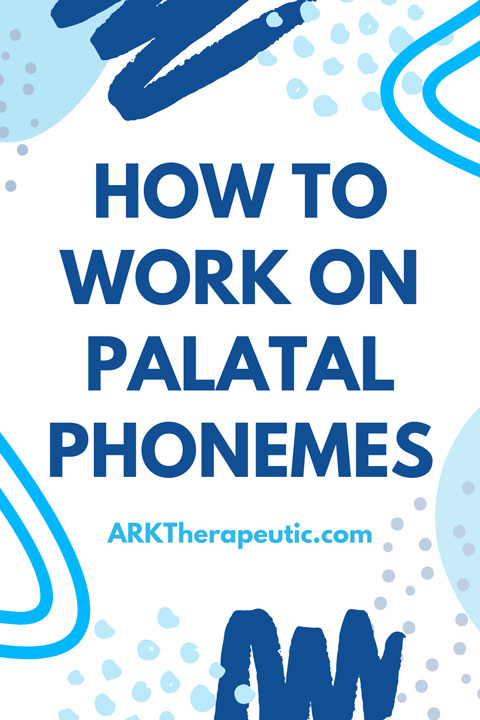
.
PALATAL (r) PHONEMES [20:57]:
Let’s go now to some palatal phonemes like (r) - very common in speech therapy in Greece, I believe in all the countries. Especially in Greek or Spanish, we don’t have this palatal "R" but we have a strong trilled "R". So we need a very strong tip of the tongue and also good tongue elevation.
What I want to focus on here is that for a nice (r), we have to also work on the base of the tongue - but I'm going to reserve the exercise when we’re doing the velar phonemes.
For the moment we want to work on tongue elevation, not so much in front of the palate alveolar, but a bit backwards. As I'm saying to the children, it’s like we're going to “swallow” our tongue to make the "R" sound. That's why I always start with the English “r” even in Greece. And you know Greek parents say "oh it’s English," but I say "Don’t worry, it will come forward, trust me!"
I’m going to again take the Button Tip because I like it to push the tongue [using the blue Button Tip under the tongue to push it backwards] and I'm going to use this nice vibration. Ideally don’t use the bigger one from the teal set. I give this vibration to the tongue upwards and backwards [pushing the tongue backward from underneath the tongue].
Then I will take again my Fine Tip:
- Add a Cheerio or fruit loop, and remember when we were showing the "L" phoneme we had the Cheerio in front on the bumps on the spot (alveolar ridge). Well now I'm going to put the Cheerio a little bit backwards, not touching the palette - but in the middle of the mouth [and touching it with the tip of the tongue]. This is exactly where we want the tongue to be in order to pronounce "r". While I'm doing those exercises I'm usually not asking for the production of the phoneme, I'm just focusing on working on the tongue.
- And for better coordination, you can work on both placements - in front and backwards [holding the Cheerio in the front, and then moving it backwards, and repeating with the tongue tip following to touch the Cheerio]. Because you’re going to meet in therapy children who cannot pronounce either the "L" or the trilled "R", so you have to always work on both of them. So in front and backwards for a nice R.
.
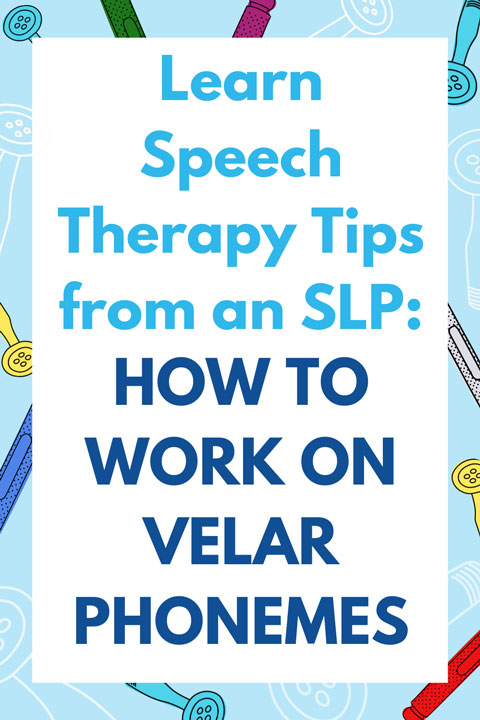
.
VELAR (k, g) PHONEMES [24:10]:
And finally let’s go to the velar (k, g) phonemes like K and G in some languages. Usually children have the fronting problem - instead of "K" they say "T" and what we want here is tongue retraction on the base of the mouth.
So I’m going to take again my favorite Button Tip, that’s why you need the Button Tips, it applies everywhere - in feeding therapy, speech therapy, and in all the phonemes! I’m so happy that they have created this Z-Vibe tip.
- What I’m going to do is to push the tongue backwards [using the teal Button Tip] on the mouth. Be prepared to meet some strong resistance from the tongue.
- If the child cannot pronounce "kah" then ask to say "ah". You see with a nice "ah", I can go in and push [pressing the Button Tip on top of the tongue]. So I push [using the Button Tip] and then I hold (for 3 to 5 seconds). It’s very nice just to give the idea. And in this moment when I’m using the Button Tips, sometimes I introduce the phoneme like "kah" and I can see how much resistance I have from the tongue.
- I want to share with you at this moment an exercise that I’m using for tongue retraction that I have in my tongue thrust therapy program. I call it “bowl” exercise because I want to create a nice space between the lower teeth, the tongue, and the mouth.
- So if the child can say "kah", I ask to say "kah" and stay there. Or if we have a problem with "kah" or "gah" then say "ah".
- So I have a little space here, my little “bowl” and I’m going to take a Smarties (candy). First, with tongue at the back of the mouth, I’m going to add the smarties [to the “bowl” / space in front of the tongue, and have the child hold it] there for up to 10 [seconds]. Then the child can eat the smarties.
- I put the smarties there because it works like a “stop” - a stop for the tongue. Because instinctively when you first put it, [the child] wants to lick it or it goes away and “Oh what a pity, we can’t have the smarties - let’s start with another one!” And then you give extra motivation to the child to stay still, with the tongue at the base of the mouth and then they can have it.
- Gradually I add some bigger and bigger snacks. I don’t know if you have them in the states, but the biggest ones I use are the Malteses - look it’s quite big [similar to Whoppers]. And I use this exercise also when I work on “kah”, “gah”, or “ah” because I have the smarties and ask the child to say for example a word like “cake”.
The secret to those exercises is that I have nice snacks - of course some parents don’t like that very much because I use sweets, but for me - it’s very important to have the child motivated and happy. And of course, ask for allergies before you introduce snacks to your therapy program, but I think it’s a very fun way to do more and more repetitions. And I always give the parents some more “healthier” versions of snacks, like you can use a blueberry, or pistachio or peanut if you don’t want to use so much sweets. And I always have those little bags (small plastic Ziploc bags) that I put inside some snacks that I’m sure they can have in the house and do as a carryover - this “bowl” exercise, that they love very much.
Alright. So I think at this moment we have covered most of the basic phonemes in the oral cavity, so we can go back to Hannah and have some time for questions. Thank you very much!
QUESTIONS [29:20]:
Hannah: Thank you, Angeliki - that was absolutely wonderful! We’ll go ahead and take some time for some questions. The first one we’re going to do: Why do you work on the sides of the lips - what's the function of that?
Angeliki: Alright I think they mean the sides of the lips, yes? Because sometimes we may have good lip closure in the front [of the mouth] but here [on the sides of the mouth] we may have some drooling. Or for some people there may be asymmetry on the face - you can also see that when you work with adults after aphasia or some kind of an accident. They have asymmetry and a weak side on the face.
Hannah: Thank you! And there was another question: How do you combine working on speech and language development together?
.
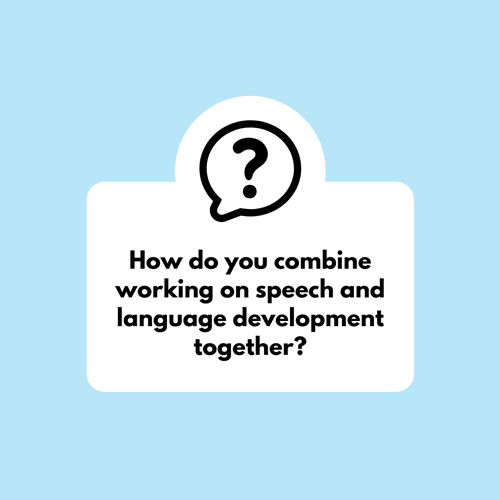
.
Angeliki: Okay, nice question! Usually when as I said, if we have a very young child - 2.5 or 3 years old with only speech and language delay - if this is the diagnosis with no other symptoms around the diagnosis, then I start with the bilabial phonemes. I combine those phonemes with some target words. So let’s say that I’m starting with the phoneme "buh" - also it’s nice because "buh" and "muh" have some everyday words for the child, for both phonemes like “mommy, bath, bowl”. So I start with the phoneme “buh” for articulation and then I have 5 or 6 target words like “bath, ball, bub” or some names - but that’s how I combine articulation and language. And I do the same as long as I’m developing more phonemes.
Hannah: Yeah! Alright, let’s see - now we have Nicole asking: With babies and kids that are hypersensitive to having their mouths touched, especially to fit with the Y tip, what are some prep activities that you would suggest with the Z-Vibe before trying to use the Y Tip?
Angeliki: Oh, I think Nicole has to watch the previous webinar on pre-feeding skills that we have talked a lot on feeding and how we start with first, massaging the face and THEN add the vibration. Because yes, no vibration when we have oral defensiveness on the face.
Hannah: What strategies do you have for the lateral lisp / slushy /s/ sound?
.
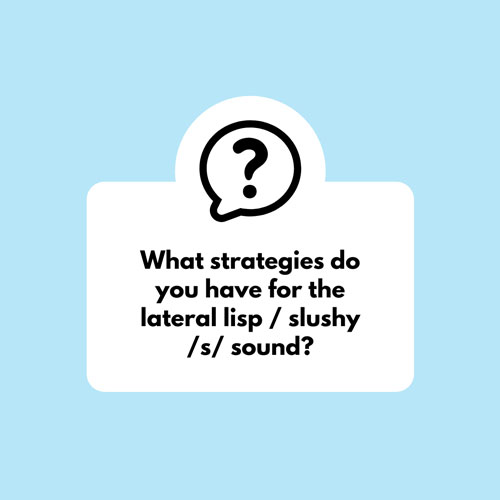
.
Angeliki: Yeah, I think lateral s - it’s a big thing in speech therapy. Lateral s is when the tongue is very flat. If for sure we have tongue thrust, so for me - it’s very important to work on those exercises where you have to retract the tongue on the base of the mouth so backing the tongue and elevation. Because for a good "S" we need the tongue backward and strong on the tip. So combination of the “bowl” exercise and good position of the tip on the palate alveolar. Those two exercises are very important to succeed at a good "ssss" sound and reduce lateral one.
Hannah: Okay! Any strategies do you have for patients who are congested or who are primary mouth breathers while targeting the bilabials?
Angeliki: Yeah, that's very nice. So everything that we can do to ensure lip closure - [using] the Y Tips and Button Tips. But if they are mouth breathers, there are also other things that we have to check - how well they can breathe through the nose, and re-educate their breathing. So it’s not only muscular they have to work on for their breathing too, but the Button Tips I think are very useful to work on lip closure.
Hannah: Okay, so it looks like we are about the mark where we want to wrap things up. [Angeliki], is there anything that you wanted to add before we go?
Angeliki: No, it’s okay! Thank you very, very much and I hope it was useful! And of course we have so many more things to say, but yeah the time is short!
Hannah: Definitely! Well thank you so much Angeliki and everyone that joined in! We’re always looking forward to hosting these webinars with everyone. We hope you guys learned something new today and we’ll see everyone next time! Alright, bye!
Angeliki: Bye everyone!
.
Angeliki Xygka is a speech and language therapist, myofunctional therapist, and an ARK consultant. She graduated from City University London in 1996 and is a member of the Panhellenic Association of Logopedics. She is also an Orofacial Myofunctional therapist trained by the American Academy of Orofacial Myofunctional Therapy and an SI therapist.
She has been working for 25 years in Athens Greece, specializing in Apraxia, speech and language delay, stammering, and feeding therapy. She has also developed her own method of “tongue thrust therapy”.
She is married and the mother of five children.
Follow Angeliki on Instagram @angeliki.xygka or visit her website at www.logopedikos.gr.
.
